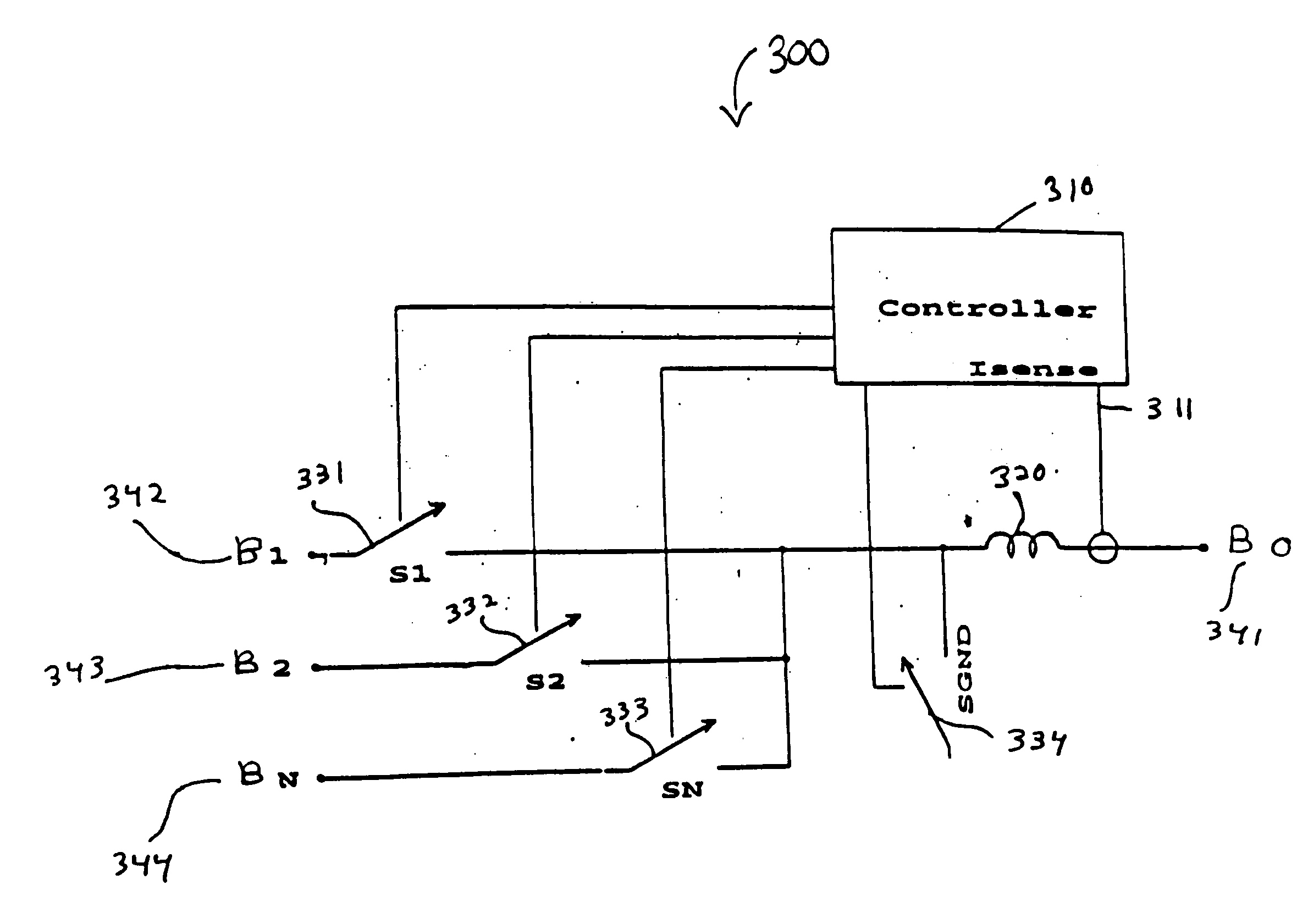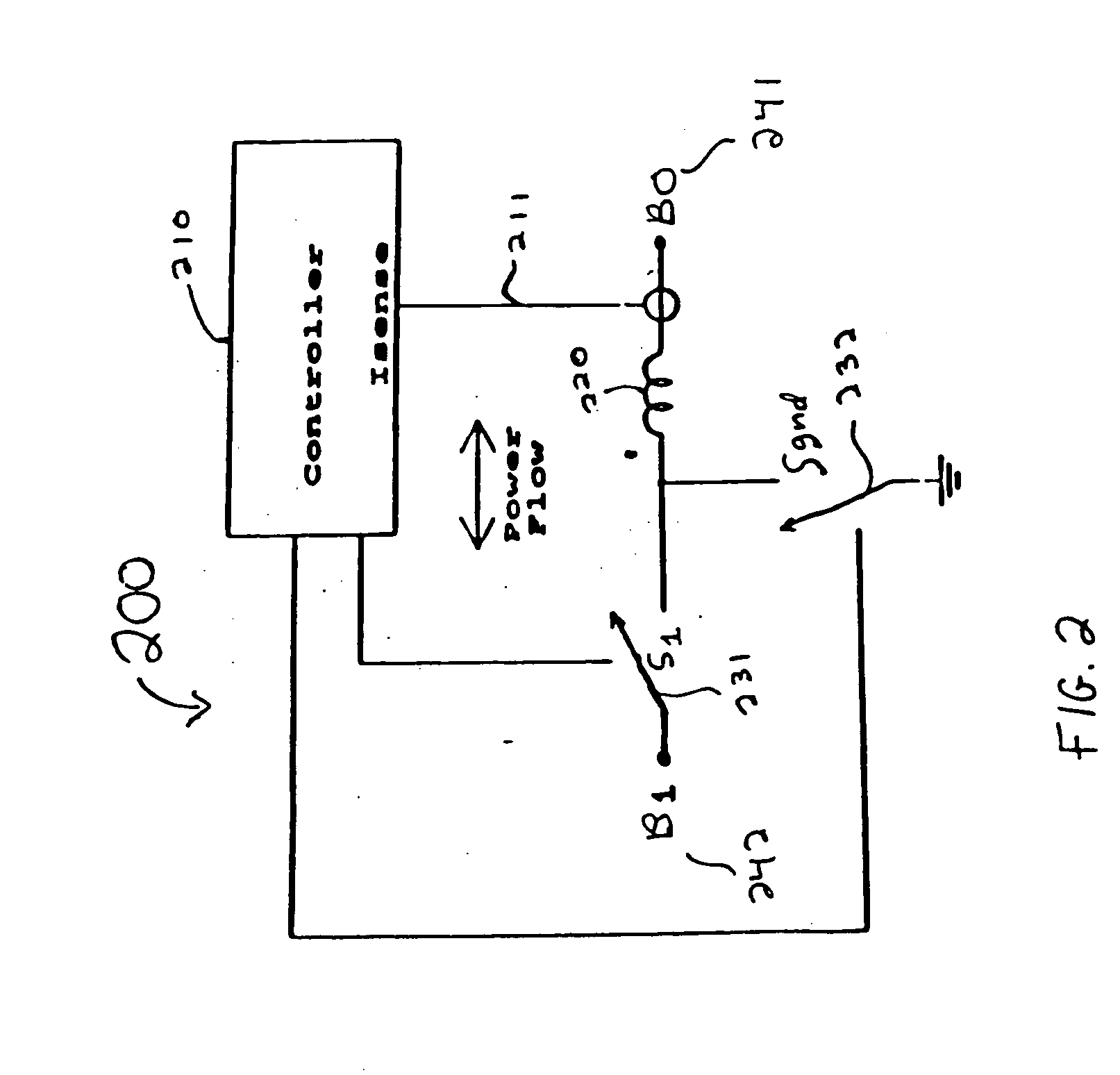Bidirectional power conversion with multiple control loops
a power conversion and control loop technology, applied in the direction of dynamo-electric machines, braking systems, electric variable regulation, etc., can solve the problems of inopportunely large amount of switches present, and the true bidirectional power conversion is not realized, so as to reduce the number of switches used in fabricating the circuit of the present invention, the volume, cost, complexity, and the size of the bidirectional power converter
- Summary
- Abstract
- Description
- Claims
- Application Information
AI Technical Summary
Benefits of technology
Problems solved by technology
Method used
Image
Examples
Embodiment Construction
[0024]FIG. 1 shows a simplified schematic 100 of a bidirectional power converter in accordance with the principles of the present invention. Schematic 100 comprises controller 110, reactive elements 120, switches S0131, S1132, SN 133 and SGND 134 and power buses B0141, B1142 and BN143. In schematic 100, as well as in the following circuits to be presented in accordance with the principles of the present invention, the switches shown are generally single-pole, single-throw switches. In practice, these switches may be realized, for example, by using semiconductor devices such as power metal-oxide semiconductor field effect transistors (MOSFETs), insulated gate bipolar transistors (IGBTs), bipolar junction transistors (BJTs), thyristors or other suitable devices.
[0025] Switch S0131 of FIG. 1 is used to control the flow of power between bus B0141 and reactive elements 120. Similarly, switches S1132 and SN 133 control the power flow between bus B1142 and reactive elements 120, and betwe...
PUM
 Login to View More
Login to View More Abstract
Description
Claims
Application Information
 Login to View More
Login to View More - R&D
- Intellectual Property
- Life Sciences
- Materials
- Tech Scout
- Unparalleled Data Quality
- Higher Quality Content
- 60% Fewer Hallucinations
Browse by: Latest US Patents, China's latest patents, Technical Efficacy Thesaurus, Application Domain, Technology Topic, Popular Technical Reports.
© 2025 PatSnap. All rights reserved.Legal|Privacy policy|Modern Slavery Act Transparency Statement|Sitemap|About US| Contact US: help@patsnap.com



